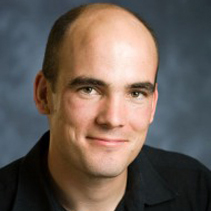Home⁄ Education⁄ Graduate and Undergraduate Programs⁄ Research Experience for Undergraduates (REU)⁄ REU 2023 Projects⁄ Hierarchical design of Bio-inspired Gas Diffusion Electrodes for Electrochemical CO2 Reduction
Hierarchical design of Bio-inspired Gas Diffusion Electrodes for Electrochemical CO2 Reduction
Professor: Tobias Hanrath
Project Description: This project focuses on investigating processing-structure-performance relationships of gas-diffusion electrodes fabricated via additive manufacturing methods.
The gas diffusion electrodes will be used in pulsed electrochemical CO2 reduction reactions, which from both a mechanistic as well as operational perspective has broad implications spanning multiple time and length scales. At atomic scales, the pulsed potential influences the dynamic restructuring of surfaces and distribution of surface-adsorbed species; at millisecond-to-second timescales, the pulsed potential impacts the profiles of interfacial water, ions, and intermediates within the electrical double layer (EDL). Finally, at minute-to-hour timescales, the pulsed potential can mitigate surface deactivation to ensure electrode durability. Using pulsing to control the reaction microenvironment is a cost-effective “plug-and-play” approach to impact reaction durability and selectivity, bringing eCO2R one step closer to practical application. However, to-date, pulsing electrochemistry studies have been limited to planar copper electrode geometries. Bringing the full prospects of this approach to fruition requires design, fabrication, and testing of hierarchical 3D electrode structures in which temporal and spatial aspects of the reaction microenvironment can be systematically analyzed.
Recent advances in additive manufacturing, especially of hierarchical structures, have opened up a fertile opportunity space to create and study hierarchical electrode structures. Gas-diffusion electrodes in particular stand to benefit from advanced manufacturing capabilities by virtue of the fact that optimizing their structure requires consideration of gas-, liquid-, and charge-transport spanning multiple time and length scales. The ability to design hierarchical porous gas diffusion electrodes and to test their performance in pulsed electrochemical reactions presents an exciting opportunity to significantly advance the concept of creating ‘electronic leaves’ capable of valorizing CO2 powered by renewable electricity sources. Students involved in this project will learn how to fabricate gas diffusion electrodes based on copper oxide nanocrystals inks and to characterize their performance in pulsed electrochemical CO2 reduction experiments.

